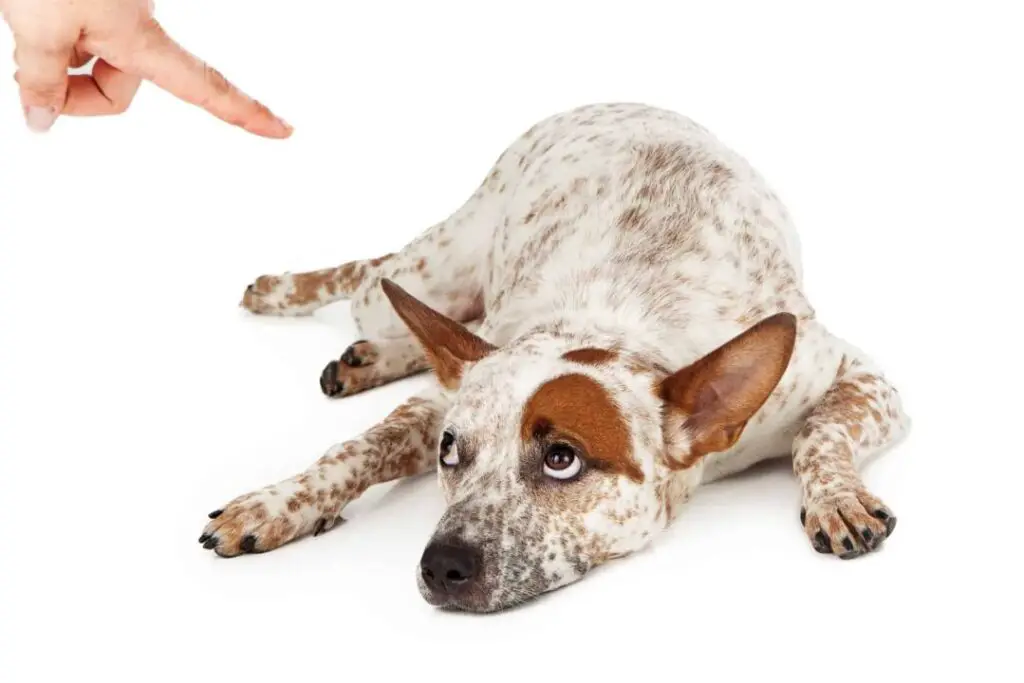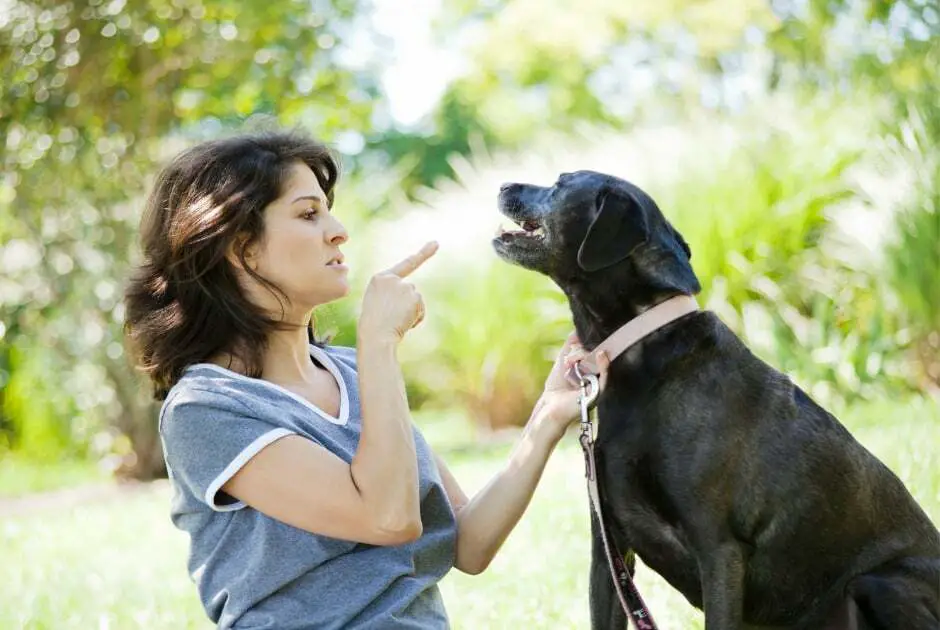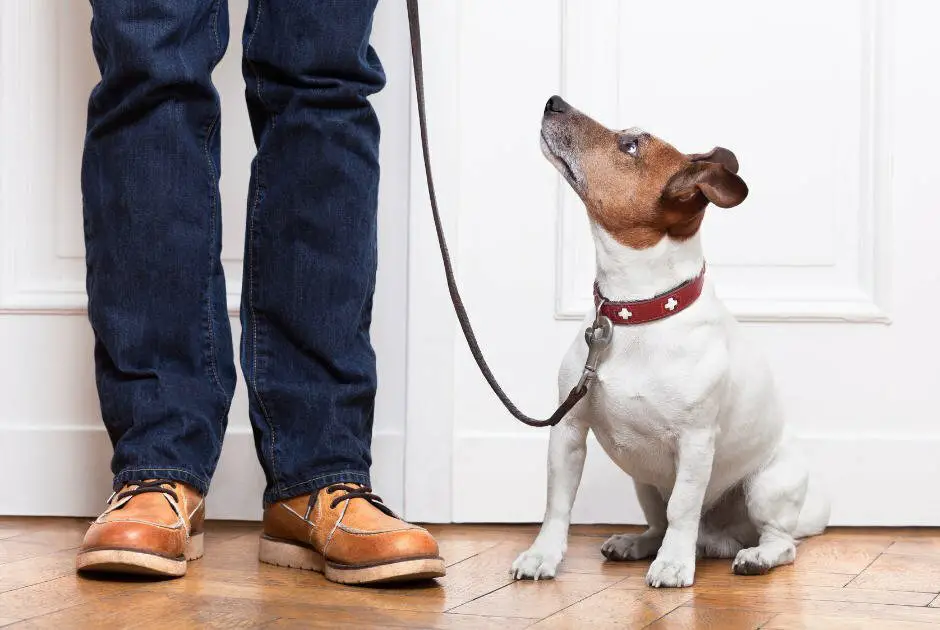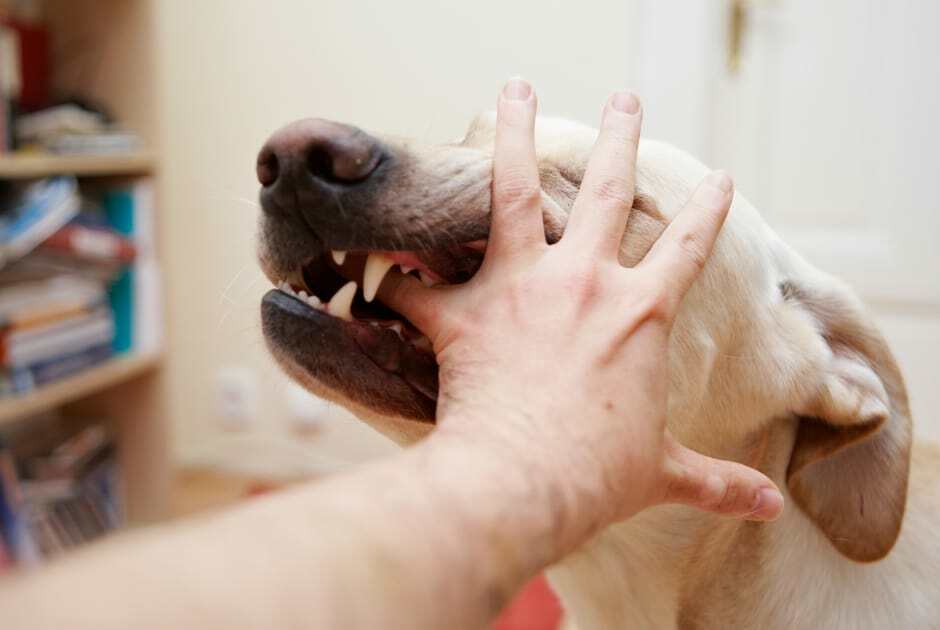Has your dog done something wrong, and you just aren’t sure how to effectively discipline your dog? Did you just say yes? If you did, I am here to help you in my article on how to discipline a dog.
You will find out why your dog might need discipline and how to give it to your dog without fear or punishment. It is very important that you correct the behavior without the dog feeling fearful of you afterward.
Why Do Dogs Need Discipline?
Dogs may have bad behavior or acting out due to a variety of reasons, such as anxiety, the dog breed, puppy like behavior, boredom, or even because your dog isn’t well enough trained.
Below you will find an explanation for each reason why your dog may be acting out or need extra discipline.
Dog Anxiety – Dog anxiety is one of the more prevalent causes of dogs misbehaving. If your dog is not a puppy and is constantly chewing or destroying items, it could be because your dog has some anxiety.
Sometimes the anxiety can even turn into aggression towards owners, other people, and even animals.
Due to the dog’s Breed – Your dog’s breed will tell you a lot about it. Some dog breed just tends to have a more yappy or even destructive nature, while others are more laid back. Before picking out a new puppy or dog, you need to look at the temperament and trainability of the dog you are interested in.
If you have one of the stubborn dogs or has a natural drive to catch prey or play rough, your dog might have some behavioral tendencies that will need to be disciplined.
Young Puppy like Behavior – The puppy stage is considered the adolescent stage where your dog is learning about everything in its new environment. This is basically the time where our dog isn’t mature, yet so it may tend to misbehave.
Your Dog Is Bored – Some dog breeds get bored easier than others. If your dog gets too bored, it can start to display destructive tendencies or even excessive barking/scratching at doors, etc. Boredom can also occur when your dog doesn’t get enough exercise.
Never Been Trained – A dog that has never been trained will likely need more training than a well-trained dog. Many dogs who are not trained tend to do whatever they want, and your dog doesn’t understand chewing up your show was wrong.
How to Discipline a Dog
Disciplining your dog can be a very tough thing to do, especially when you are unsure how to tell your dog it did something wrong without physical punishment.
Dogs need discipline because it teaches your dog to obey the house rules and to respect you, the owner. Here are some steps to get your dog discipline in a safe, effective way without physical punishment.
1. Setting the Ground Rules
When you get a dog, you the owner, must decide which rules you will have for your dog. For example, is one of your rules that your dog cannot sit on the couch? Figure out your rules and voice them to your dog.
When your dog breaks a rule, simply state no and guide your dog off the couch. Repeat the process until your dog seems to understand or stops jumping on the couch.
You will also want to make sure all the family members in the household know the rules and also enforce them.
Your dog may try sitting on the couch with another family member, and if that family member lets your dog, then it could ruin your training process.
2. Become Your Dogs Leader
If your dog doesn’t establish you as a leader, then you can’t expect your dog to listen to you during training. Make sure you assert your dominance and become the leader of your pack. Some ways to accomplish this is by:
- You lead our dog during a walk, not the other way around.
- Eat before your dog eats. Pack leader eats first, then the dog.
- Lead the way, have the dog follow you, not you following the dog.
3. Begin Watching your Dogs Behavior
Before you can begin disciplining your dog, you need to watch for negative behavior. The only way to discipline and correctly correct a negative behavior is by stopping the behavior when it is happening. If you discipline your dog after your dog will not understand what behavior you are referring to.
If you see your dog scratching at the back door, you can reprehend your dog when it is exhibiting the behavior. Say nice and loud the word no to teach your dog to stop scratching. Repeat the process of saying no to teach your dog that it’s wrong to scratch up the door.
4. Correct Behavior Problem with Alternative or Positive Reinforcement
Turn the negative behavior into a positive one by changing the situation. This will teach your dog that the first behavior is unacceptable, but the dog would be allowed to do something else.
For example, if your dog likes to dig various holes in the yard, you can create a safe space such as a sandbox where your dog can dig. Turn the behavior into a positive.
When your dog exhibits excellent behavior, it is very important to praise your dog. Every time you praise your dog, it teaches your dog that they did something good, and it made you the owner happy.
Some ways you can give your dog positive reinforcement is by:
- Praise
- Treats
- Hug and Kisses
- Petting
- Give your Dog a Favorite Toy
5. Practice Negative Reinforcement in Some Instances
Sometimes your dog should have consequences where it gets something taken away to teach your dog that it won’t get praise when it does this.
Say your dog disobeys a command you give it, then tell your dog no and do not reward your dog with praise until it performs the action you are looking for.
6. Avoid Physical Punishment
Physical punishment should not be used as it can create negative emotions for your dog, such as fear and aggression. If you use this form of discipline, it can make your dog not bond with you anymore and not trust you.
Do not hit your dog on the nose or spank your dog as it can lead to this distrust your dog will have with you. Only discipline your dog by firmly stating no.
7. Try Dog Timeout
If your dog ignores your commands, then I suggest putting your dog into doggy timeout. This is to create a safe place where your dog can be isolated for a certain period of time.
Put your dog into a boring place in the home, one that your dog wouldn’t necessarily hang out in, such as a bathroom or laundry room.
Timeouts need to be short when it comes to a dog. One to two minutes will be enough timeout time.
You may have to repeat doggy timeout if the behavior continues to happen until your dog associates the timeout with what they are doing.
8. Crate Training
Crate training is a very valuable tool that can benefit not only you but also your dog. Dogs need a safe space to call their own that they can be comfortable in.
A lot of dog owners purchase crates to keep their dogs safe and contain while away from the home running errands or at work.
This will keep your dog safe from getting into trouble while you are gone and not at home. When you first get a dog crate, you need to introduce it to your dog slowly. Every time your dog goes into it, give your dog a treat and lots of praise.
Eventually, your dog will use it more and more and will know it is a safe place. Never use a dog crate as a punishment or a time out area. This will make your dog associate bad memories with it.
9. Seek Help when Needed
If you have tried practically everything on this list and more and your dog is still having behavioral or discipline problems, you should seek help.
Sometimes dogs act out due to an underlying medical condition that you may have no idea your dog has.
Seek out help from a veterinarian to just double check that your dog is healthy and there is no health reason to be concerned about.
Once your vet gives you the all clear, you can seek help from a dog obedience trainer to really figure out why your dog is doing what it’s doing.
10. Keep Consistent
Lastly, you need to keep up with your dog’s training and discipline. If you get slack and don’t try to fix your dog’s negative behavior, then you will basically have to start at step 1 all over again.
Even with the other family member in the house to train and curb the behavior your dog has will take effort from everyone. You do this and work at it every time; then your dog will be perfectly disciplined and well behaved.
How to Discipline a Dog with Anxiety
Separation anxiety is one of the major causes of bad dog behavior. Puppies will have a harder time with this than adult dogs and will eventually lessen as your dog gets older. Sometimes that isn’t the case, as some dogs just have major issues with this.
Usually, a dog with separation anxiety or anxiety, in general, will start to misbehave 30 minutes to one hour after you leave. The destruction can be mild to severe. Your dog will likely chew up and get into things it isn’t supposed to.
You might be able to train your dog not to do this through the crate training method. Create a safe space for your dog to be in while you are gone. You can put a doggy bed and toys inside the crate to occupy your dog while gone.
It will take your dog some time to warm up to the idea of crate training but will eventually get used to it. This is how you can manage and discipline a dog with anxiety.
How to Discipline a Deaf Dog
Dogs who are deaf can be challenging to discipline. Since a deaf dog cannot hear, you will not be able to perform the saying the word no training technique. Instead, try using hand motions or gestures to get your point across.
If your dog is simply doing something, it shouldn’t try telling your dog no by shaking your finger back and forth or even giving your dog a good tap until it gives you its full attention.
You can still continue regular training with a deaf dog just like you would with a hearing dog.
How to Discipline an Old Dog
An old dog is just a senior or an adult dog. People often don’t take the time to train their dog, which basically leaves you with an older dog that just does whatever it pleases.
Yes, you can discipline an older dog and train an older dog. It may take your older dog longer to get the new routine down and break the old habits the dog has developed, but it is certainly possible. Remember to use positive reinforcement and make it all about treats in the beginning.
How to Discipline a Dog that Snaps at You
If you have a dog that snaps or bites, it is important to discipline your dog without physical punishment. You need to retrain your dog now not to bite or snap.
If your dog bites when you take toys away or touch your dog start touching your dog in a different place or try to place a hand on the toy.
If your dog does not bite you, then reward your dog with a treat. After you do this countlessly, your dog will start to apricate the positive training and leave the negative biting behind.
This is retraining the way your dog thinks and ends up curbing some of that aggression.
Conclusion
Now you have the necessary steps to help you discipline your dog. If you follow these steps, you should have great success. Remember, the key to disciplining your dog is to be consistent with your training and how you do it.
Have you ever had trouble disciplining your dog? Let us know your experience down below and if you have any other tips.








